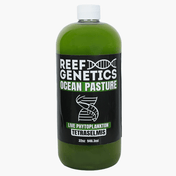Zoanthid corals, often referred to as the "flowers of the sea," are a favorite among marine aquarium enthusiasts. Known for their vibrant colors and relatively easy care requirements, these corals can transform any reef tank into a mesmerizing underwater garden. This comprehensive guide will walk you through everything you need to know about caring for Zoanthid corals, from their natural habitat and benefits to specific care tips and advanced techniques.
What are Zoanthid Corals?
Zoanthid corals are a type of colonial marine invertebrate that belong to the order Zoantharia. They are characterized by their beautiful, flower-like polyps that come in a wide array of colors and patterns. Each polyp is connected by a mat-like tissue called the coenenchyme, forming colonies that can cover large areas of the substrate in a reef tank.
Types of Zoanthid Corals
Common Species
Several species of Zoanthid corals are commonly kept in home aquariums. Some popular ones include Zoanthus sociatus, Protopalythoa grandis, and Palythoa caribaeorum. These species are favored for their resilience and stunning appearance.
Rare and Exotic Species
For the more adventurous aquarist, rare and exotic species like Zoanthus gigantus and Protopalythoa mutuki offer unique challenges and rewards. These species often require more specialized care but are prized for their unusual colors and patterns.
Color Variations
One of the most appealing aspects of Zoanthid corals is their vast range of colors. From bright reds and oranges to deep blues and purples, these corals can display almost every hue imaginable. This diversity allows for endless creativity in aquascaping and tank design.
Natural Habitat
Geographic Distribution
Zoanthid corals are found in oceans worldwide, with a significant presence in the Indo-Pacific region, the Caribbean, and the Red Sea. They thrive in a variety of environments, from shallow reef flats to deeper reef slopes.
Environmental Conditions
In their natural habitat, Zoanthid corals are exposed to varying conditions, including changes in light, water flow, and nutrient availability. Understanding these conditions helps aquarists replicate them in a home aquarium to ensure the health and growth of the corals.
Benefits of Keeping Zoanthid Corals
Aesthetic Appeal
The vibrant colors and intricate patterns of Zoanthid corals make them a visually stunning addition to any reef tank. They can serve as focal points or complement other corals and marine life, creating a harmonious and attractive underwater landscape.
Biodiversity Enhancement
Zoanthid corals contribute to the biodiversity of a reef tank by providing habitat and shelter for various marine organisms. They can enhance the overall health and stability of the tank's ecosystem.
Ease of Care
Compared to many other types of corals, Zoanthids are relatively easy to care for. They are hardy and adaptable, making them suitable for both beginners and experienced aquarists.
Setting Up Your Aquarium
Equipment Needed
Essential equipment for a Zoanthid coral tank includes a high-quality filtration system, appropriate lighting, and water circulation pumps. Additionally, a protein skimmer and heater are important for maintaining optimal water conditions.
Water Parameters
Maintaining stable water parameters is crucial for the health of Zoanthid corals. Ideal conditions include a temperature of 75-82°F, salinity of 1.023-1.025, and a pH level of 8.1-8.4. Regular testing and adjustments are necessary to keep these parameters within the desired range.
Water Quality Management
Filtration Systems
A robust filtration system is essential for removing waste and maintaining water clarity. Options include mechanical, chemical, and biological filtration, with a combination often providing the best results.
Water Testing and Maintenance
Regular water testing is crucial to monitor parameters such as nitrate, phosphate, and calcium levels. Weekly water changes of 10-20% can help maintain water quality and provide a stable environment for the corals.
Dealing with Common Water Issues
Issues such as algae growth, cyanobacteria, and water cloudiness can arise in a reef tank. Identifying and addressing the root causes, such as excess nutrients or insufficient filtration, is key to resolving these problems.
Lighting Requirements
Types of Lighting
Zoanthid corals require appropriate lighting to thrive, with options including LED, T5, and metal halide lights. Each type has its advantages, with LEDs being the most energy-efficient and customizable.
Lighting Schedule
A consistent lighting schedule is important for coral health. Typically, 8-10 hours of light per day is sufficient, mimicking the natural light cycle of the corals' native habitat.
Adjusting Light Intensity
Light intensity should be adjusted based on the specific needs of the corals. Too much light can cause bleaching, while too little can impede growth. Observing the corals' response and making gradual adjustments can help find the optimal light level.
Feeding Zoanthid Corals
Natural Feeding Habits
In the wild, Zoanthid corals feed on plankton and other small particles suspended in the water. They use their tentacles to capture food and absorb nutrients through their tissues.
Types of Food
In a home aquarium, Zoanthid corals can be fed a variety of foods, including phytoplankton, zooplankton, and marine snow. Supplementing with target feeding can ensure they receive adequate nutrition.
Feeding Techniques
Target feeding involves using a pipette or turkey baster to deliver food directly to the corals. This method minimizes waste and ensures the corals receive enough food, promoting healthy growth.
Growth and Propagation
Understanding Growth Patterns
Zoanthid corals grow by budding, with new polyps forming from the base of existing ones. This natural process can result in rapid colony expansion under optimal conditions.
Propagation Methods
Propagation can be done through fragging, where a colony is divided into smaller pieces, or by encouraging natural spread. Proper handling and care during propagation are essential to avoid damage and promote recovery.
Encouraging Healthy Growth
Providing stable water conditions, adequate lighting, and regular feeding can encourage healthy growth. Additionally, monitoring for pests and diseases can prevent issues that hinder growth.
Common Health Issues
Identifying Diseases
Zoanthid corals can be affected by diseases such as zoa pox, fungal infections, and parasitic infestations. Early identification and treatment are crucial to prevent the spread and ensure the health of the colony.
Treatment Options
Treatments vary depending on the disease but may include freshwater dips, iodine baths, and the use of specialized medications. Consulting with experienced aquarists or veterinarians can provide guidance on the best treatment approach.
Preventative Measures
Maintaining optimal water conditions, performing regular tank maintenance, and quarantining new additions can help prevent health issues. Observing the corals regularly for signs of stress or disease allows for prompt intervention.
Tank Mates
Compatible Species
Zoanthid corals are generally compatible with a wide range of tank mates, including various fish, invertebrates, and other corals. Peaceful species that do not compete for space or resources are ideal.
Species to Avoid
Aggressive species or those that may prey on Zoanthid corals should be avoided. This includes certain fish, such as butterflyfish and some angelfish, which may nip at the corals.
Creating a Harmonious Environment
Balancing the needs of all tank inhabitants involves careful planning and monitoring. Providing ample space, hiding spots, and ensuring a balanced diet can help create a harmonious environment.
Maintenance Routine
Daily Tasks
Daily maintenance includes feeding the corals, checking equipment, and observing the tank for any signs of issues. This routine helps catch problems early and ensures the tank runs smoothly.
Weekly Checks
Weekly tasks involve testing water parameters, cleaning the tank, and performing partial water changes. These activities help maintain water quality and the overall health of the tank.
Monthly Upkeep
Monthly maintenance includes more thorough cleanings, equipment checks, and possible adjustments to the setup. Regular maintenance prevents the buildup of waste and keeps the tank in optimal condition.
Seasonal Care
Summer Tips
During summer, higher temperatures can affect the tank. Using fans or chillers to maintain stable temperatures, increasing water changes, and monitoring for signs of heat stress are essential.
Winter Adjustments
In winter, maintaining stable temperatures with heaters and insulating the tank can prevent fluctuations. Ensuring the tank is not exposed to cold drafts or direct sunlight helps maintain a consistent environment.
Transitional Periods
Spring and fall bring changes in ambient conditions that can affect the tank. Gradually adjusting lighting schedules and monitoring water parameters can help the tank transition smoothly between seasons.
Aquascaping with Zoanthid Corals
Design Principles
Effective aquascaping involves creating a balanced and visually appealing layout. Using rocks, sand, and other elements to build a natural-looking environment enhances the tank's aesthetics and functionality.
Placement Tips
Zoanthid corals should be placed where they receive adequate light and water flow. Grouping them with compatible species and avoiding overcrowding can prevent competition and promote healthy growth.
Creating Visual Interest
Using corals of different colors and growth forms adds visual interest to the tank. Arranging them in clusters or along rock formations can create striking focal points and a dynamic underwater landscape.
Advanced Care Tips
Expert Recommendations
Experienced aquarists often have unique tips and tricks for optimizing coral care. These can include specific feeding schedules, advanced water testing techniques, and customized lighting setups.
Troubleshooting Problems
Common issues such as algae outbreaks, pest infestations, and equipment failures can be addressed with targeted solutions. Having a plan in place and knowing how to respond to problems ensures quick resolution.
Enhancing Coral Colors
Enhancing the natural colors of Zoanthid corals involves providing optimal lighting, nutrition, and water conditions. Supplements and trace elements can also boost color intensity and overall health.
FAQs
What are Zoanthid corals?
Zoanthid corals are colonial marine invertebrates known for their vibrant, flower-like polyps. They are popular in reef aquariums for their beauty and ease of care.
How do I propagate Zoanthid corals?
Propagation can be done by fragging, where a colony is divided into smaller pieces. Proper handling and care during propagation are essential to avoid damage and promote recovery.
What lighting do Zoanthid corals need?
Zoanthid corals thrive under LED, T5, or metal halide lighting. A consistent schedule of 8-10 hours per day is recommended to mimic their natural habitat.
What should I feed Zoanthid corals?
Zoanthid corals can be fed phytoplankton, zooplankton, and marine snow. Target feeding with a pipette or turkey baster ensures they receive adequate nutrition.
How do I maintain water quality for Zoanthid corals?
Maintaining water quality involves regular testing, weekly water changes, and a robust filtration system. Stable water parameters are crucial for coral health.
What tank mates are compatible with Zoanthid corals?
Peaceful fish, invertebrates, and other corals are generally compatible. Avoid aggressive species that may nip at or compete with the corals.
Conclusion
Zoanthid corals are a stunning and rewarding addition to any reef tank. With their vibrant colors and relatively easy care requirements, they offer both aesthetic appeal and ecological benefits. By following this comprehensive care guide, you can ensure that your Zoanthid corals thrive and bring a piece of the ocean's beauty into your home.


















